What Happens and What You Can Do About It
For those who love to run, skip and jump, you might want to know what the pelvic floor muscles are doing during high impact activity and what can happen when they malfunction.
The pelvic floor region includes all the muscles on the bottom of our pelvis. You can picture them as one big trampoline responsible for protecting and supporting the inner organs in the pelvis: the bladder, uterus and rectum. They also assist with functions related to these organs.
With pelvic floor dysfunction, some of us leak urine when we run or jump. Leakage can happen because of:
- A weak or/and tight pelvic floor. Yes, it is not good to do Kegels all day long.
- Holding our breath. This especially happens while using heavier dumbbells or skipping.
- Clenching our abdominal muscles. Ladies, most of us are all guilty of this.
- Poor posture while running/jumping/lifting weights.
Usually we think that leaking only happens to ladies who have kids, but many females suffer from leaking, pelvic pain or heaviness even if they have not had children. This knowledge shifts our focus from just searching for a pelvic floor dysfunction to looking at the pelvic floor muscles as part of a bigger system. That larger system is our core.
The core consists of our breathing muscles, the diaphragm, our abdominal muscles and the spinal muscles. The bottom of the cavity is completed by pelvic floor musculature. I like to think of the core as a pressure cooker. If all the components are working in balance there is no build up of pressure. But, as soon as one component does not work in synchrony with the other components there will be a build up of pressure that ALWAYS negatively impacts PELVIC FLOOR. When this altered muscle function occurs, we can notice symptoms like small urinary leakage, increase of pelvic pressure or pain during sexual intercourse.

Photo by Isabella Mendes from Pexels https://www.pexels.com/photo/active-adult-athlete-barbell-3484
Here are some habits that we commonly do during sports that can contribute to pelvic floor dysfunction.
1. Breath Holding
This is the most common one. With jumping activities or exercises with heavier weights we tend to hold our breath. Breath holding puts extreme downward pressure on the pelvic floor muscles that can lead to weakness.
Tips:
- ALWAYS exhale with load or “blow with the load” as a well known pelvic floor practitioner, Julie Wiebe describes.
- While jumping make sure you are not holding your breath.
- Before starting an exercise stop for a few seconds to inhale and exhale then keep this rhythm during skipping or running.
- As you are getting fatigued during exercise it is ok to pause and regroup to catch your breath.
- With weights or body weight exercises exhale when pushing the weight away from your body or exhale as you lift yourself in push up or a box squat.
2. Stomach Gripping
Many, many females are guilty of this habit. Stomach gripping is often done subconsciously as we don’t realize that we are clenching our belly button throughout the day. Again, this creates a negative pressure in the abdomen that will strain your pelvic floor and potentially cause leaking with jumping.
Tip:
- Try to keep your belly soft throughout the run or exercise class.
3. Poor Posture
Standing in proper posture makes all the core muscle components work with greater ease and more naturally. This efficient muscle activity will then provide the necessary support during high impact activities. When we slouch we are not able to use the diaphragm properly and will breathe with a more shallow respiration. As a result, the pressure increases in abdominal cavity.
Tucking our buttocks in will inhibit proper gluteal muscle activation. This postural error will also put more pressure towards the tailbone where there are not any structures to support the pelvic floor.

Tip:
- Especially during running we need the front support of the pelvic floor as it is the thickest muscular part of the pelvic floor. This support can be accessed by gently leaning into your toes. Pretend like you are running into the wind.
4. And the last but not least: The Kegel
Please do not grip your pelvic floor, also know as the Kegel, while your run and while you are skipping or using weights. The latest research shows that the pelvic floor works in anticipation of a load or impact. Therefore, adding a contraction on top of already engaged pelvic floor muscles is not necessary and actually will put the whole system into imbalance causing pain or leakage.






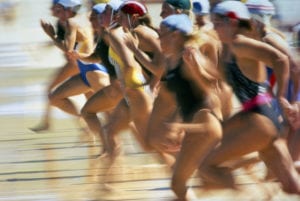 I have always thought triathletes are the ones who have the cross training figured out. Running has a bad reputation for hurting our joints and causing muscle imbalance, but triathletes within their training program go from run to pool (which is usually the number one recommended activity by health care professionals to offload sore joints). And, if it is not a swim day then they bike which is also considered a low impact activity.
I have always thought triathletes are the ones who have the cross training figured out. Running has a bad reputation for hurting our joints and causing muscle imbalance, but triathletes within their training program go from run to pool (which is usually the number one recommended activity by health care professionals to offload sore joints). And, if it is not a swim day then they bike which is also considered a low impact activity.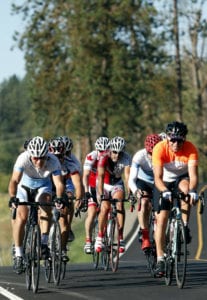 Cycling is a great sport for reducing heart diseases and prevent cancer but it has developed a bad reputation over the years for contributing to erectile dysfunction in males. To evaluate this, a recent study in Journal of Urology compared male runners and swimmers to cyclists. The study concluded that sexual and urinary health of cyclists is similar to runners and swimmers.
Cycling is a great sport for reducing heart diseases and prevent cancer but it has developed a bad reputation over the years for contributing to erectile dysfunction in males. To evaluate this, a recent study in Journal of Urology compared male runners and swimmers to cyclists. The study concluded that sexual and urinary health of cyclists is similar to runners and swimmers.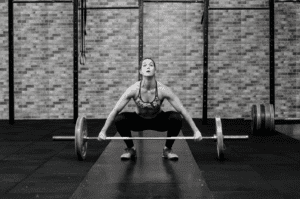



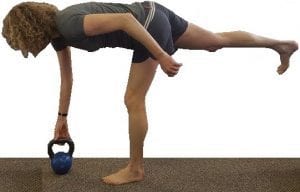 Having good balance means that you can maintain equilibrium in more challenging situations. Moving quickly over uneven or twisty terrain and experiencing visual compromise such as going from light to shade can definitely increase the balance challenge. Balance can also be negatively influenced with age, fatigue and prior injury.
Having good balance means that you can maintain equilibrium in more challenging situations. Moving quickly over uneven or twisty terrain and experiencing visual compromise such as going from light to shade can definitely increase the balance challenge. Balance can also be negatively influenced with age, fatigue and prior injury.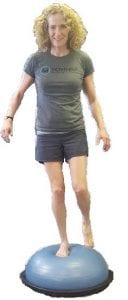 Exercises to work on proprioception are:
Exercises to work on proprioception are: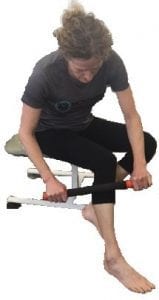 Stiff knees, hips and ankles can decrease joint resilience, impair balance and impact agility. Ankle and hip mobility are commonly reduced in experienced runners due to the repetitive and generally linear motion of the sport.
Stiff knees, hips and ankles can decrease joint resilience, impair balance and impact agility. Ankle and hip mobility are commonly reduced in experienced runners due to the repetitive and generally linear motion of the sport.


